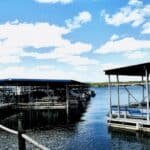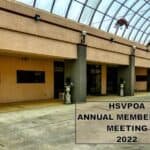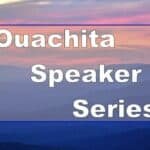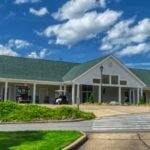Economic Impact Study
The Hot Springs Village Property Owners’ Association, with the assistance of the Governmental Affairs Committee and Hot Springs Village Board of Directors, arranged for the University of Arkansas to produce a study that details the economic impact the Village has on Saline and Garland Counties and the state of Arkansas. This most recent report was published in December 2021. (Please see the pdf below to view and/or download the full study.)
Previously, two reports were published in 2010 and 2016. The author of all three of the impact studies is Wayne P. Miller, Professor – Community, Professional, and Economic Development at the University of Arkansas System Divison of Agriculture. Professor Miller is retiring from his position at the U of A. Some of the report highlights are listed below.
Hot Springs Village Social and Economic Contributions Fast Facts
The study is chock full of facts and may contain answers to the questions of many. Did you know the Village has 9,038 housing units, which includes 201 assisted living, 99 timeshares, and 8,738 single-family and multi-family homes? Fourteen percent of the homes are occupied by renters, compared to a national figure of 36%.
The report also contains a history of the Village, including the origins, information about John A. Cooper, and the development of the Village.
Population Charactristics
The study addresses population, age distribution, education, employment, and poverty. Were you aware that 76% of Village households receive Social Security income, compared to Arkansas – 36% and the United States -31%?
Poverty rates in the Village run considerably below both state and national averages. 9.6% of Villagers had income below the poverty level, but only 4.2% of Villagers live below the poverty level.
Data from the 2015-19 Amerian Community Survey shows that female-headed families and children under 18 in the Village have a very high poverty rate. In fact, the poverty of this demographic is much higher than state and national averages. The survey suggests that slightly over one-third of Village children and almost two-fifths of female-headed families live in poverty.
Disclaimer: As the sample size for the Village is very small, the margin of error in the poverty estimates is very high, and the data regarding Village poverty levels of female-headed households and children may not be reliable.
Nearly two-thirds of Village income is derived from Social Security and other retirements. Much of this income is spent in the region.
Village Governance
The Village is not a municipality but is considered to be a Census Designated Place. This means it is a “populated area identified by name, not incorporated but otherwise, resembling an incorporated place.” As the Village is contained in two different counties, this leads to unique administrative status.
Cooper Communities, Incorporated (CCI) envisioned the village as largely a single-family, residential retirement community with a wealth of amenities. In the first four decades of existence, that goal was realized, but today an era of transition is occurring.
The enforcement of the protective covenants was transferred from Cooper to the POA in 2007, marking a shift in management and leadership responsibilities. Around that time, a national recession greatly impacted the pace of Village growth.
Lifestyle and Leisure
“Hot Springs Village was designed to be a golfer’s paradise,” with seven 18-hole courses and a 27-hole complex. There is also a private-membership club at Diamante.
Hot Springs Village is home to 11 recreational lakes, covering more than 2,000 acres. The lakes are enjoyed by swimmers, boaters, and also attract many fishermen and others. In addition, Lake Lago is a protected water reservoir.
Tennis is played on ten clay courts and three hard-surface courts. Diamante also offers four private lighted clay courts.
Many other recreation activities from pickleball to hiking are also available to Villagers.
Education
The Village school children attend two school districts, Jessieville and Fountain Lake.
Many students also commute to the 11 advanced-education facilities located within a 50-mile radius.
Clubs
There are 130 clubs and organizations in Hot Springs Village with many different interests. New groups are being formed every year.
Economic Growth
Hot Springs Village has a positive economic effect on the Arkansas state economy, with a measurable economic contribution of $397 million in 2020. Garland and Saline Counties benefitted the most from the influx of Village dollars.
This income source leads to additional jobs and income both in the region and statewide. “These are called multiplier effects.”
Tax Benefits from Villagers to Garland and Saline County
Garland and Saline County benefit from Villagers paying both property tax and sales tax. Saline receives more of its tax income through property taxes. Garland County generated almost 43 percent of its revenue from a 1.5 cent county sales tax.
The Village pays approximately $1.5 million annually in sales taxes to the two counties.
Both Jessieville and Fountain Lake School Districts receive a large share of property tax revenue from the Village, despite only a small share of Village students attending.
FLSD receives 78% of its property tax revenue from the Village with only 18% of students being from the Village. Jessieville School District receives 76% of its property tax revenue from Villagers, with about 48 percent of the students residing in the Village.
HSV-Social-Economic-Contributions-1.31-2021CHERYL DOWDEN, Hot Springs Village People Gazette, March 13, 2022
▩ ▩ ▩ ▩ ▩
We are glad you dropped in to visit Hot Springs Village People Gazette. If you like, please comment below; we love to hear your opinions. Thank you for keeping the comments polite and on topic. Please use your first and last real name. We promote local businesses, events, and organizations! Let us know if we can help. We also accept opinion pieces and articles from guest authors. We can be contacted through this website; just click the contact button and let us know what’s on your mind. Be sure to bookmark this site and come back to visit with us often as our content is frequently changing. If you are an HSV Property Owner, click here to visit and join a private Facebook Group.











Tom Blakeman
03/13/2022 — 2:37 pm
They have been doing these studies for a while now, every couple of years. We actually pay good money to have them done. Out of our POA budget. Our money. Not free. Ever study reveals and reconfirms that HSV contributes millions and millions and millions of dollars every year the the local communities and counties. But, guess what. We get almost nothing back for our contributions. No roads. No police. No fire protection or EMS. It’s a shame. So everyone should think about this when taking those victory laps.